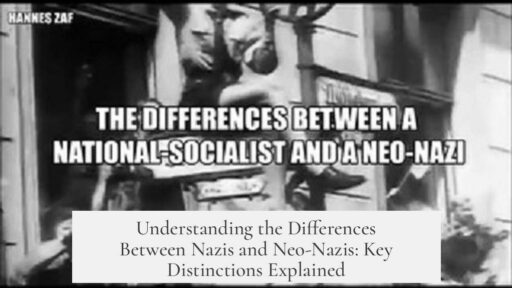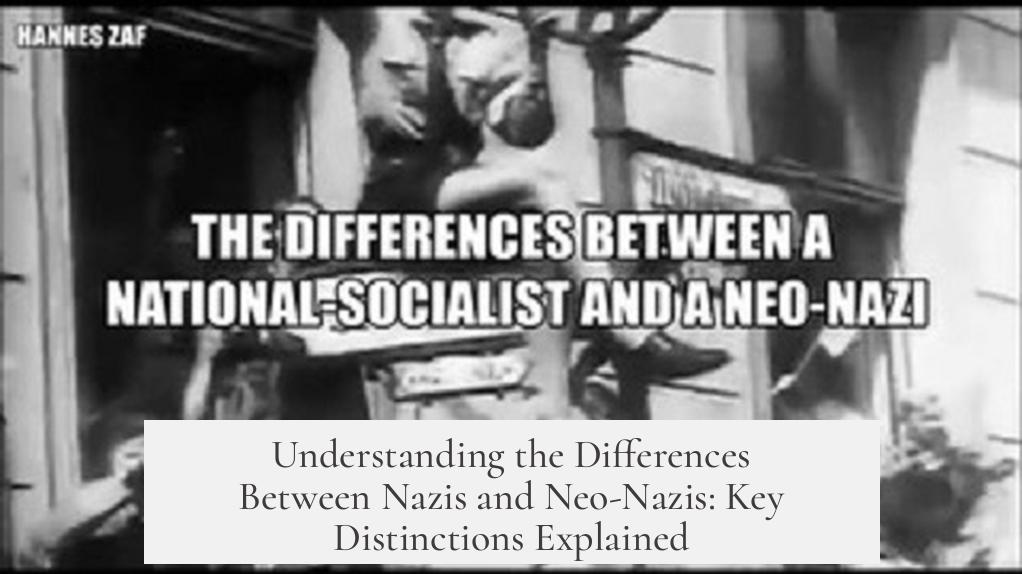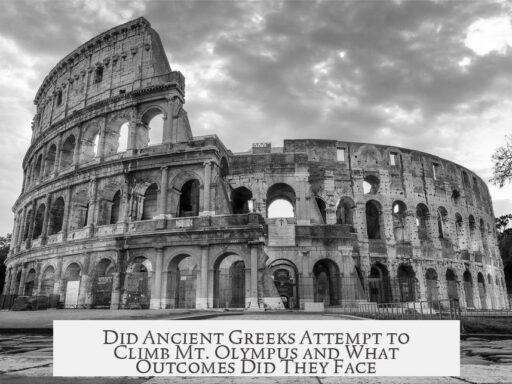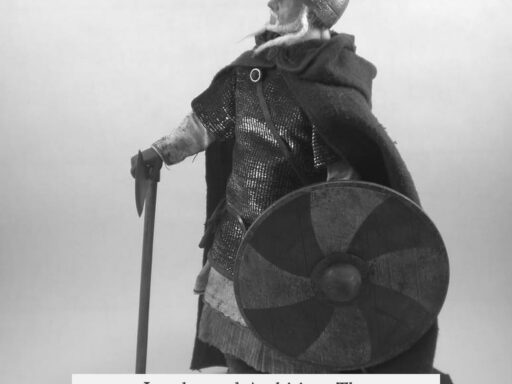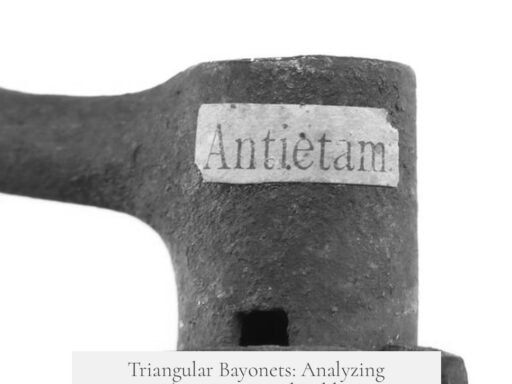The difference between Nazis and neo-Nazis lies in historical context, timing, and organizational existence. Nazis were actual members or supporters of the National Socialist German Workers’ Party (NSDAP), active from around 1918 to 1945. Neo-Nazis identify with Nazi ideology but exist after World War II, often attempting to revive or imitate Nazi beliefs and symbols.
Original Nazis belonged to the NSDAP, a political party that ruled Germany under Adolf Hitler. Their ideology promoted extreme nationalism, racial purity, anti-Semitism, and authoritarian control. The Nazi Party collapsed with Germany’s defeat in 1945, and its structures disbanded. Thus, historical Nazis are tied to a specific time and place, directly responsible for policies and actions during that era.
Neo-Nazis, by contrast, emerge in the post-World War II period. They adopt Nazi ideology but lack direct ties to the original party or government. Neo-Nazi groups worldwide promote similar beliefs—white supremacy, anti-Semitism, and fascism—but operate independently from the historical NSDAP. Their efforts include demonstrations, propaganda, and sometimes violent acts, seeking to revive what the original Nazis had established.
| Aspect | Nazis | Neo-Nazis |
|---|---|---|
| Time Period | 1918–1945 | Post-1945 to present |
| Party Affiliation | NSDAP (original Nazi Party) | No direct connection; new groups imitating ideology |
| Ideology | Original Nazism as enacted by the party | Adopts and revives original Nazi ideology |
| Activities | Governance and war actions | Protests, propaganda, hate crimes |
Distinguishing between the two helps clarify historical accountability versus contemporary extremist movements. Nazis refer to members who directly caused events in WWII. Neo-Nazis are later followers applying an old ideology in new contexts without legitimate state power.
- Nazis are original party members active before and during WWII.
- Neo-Nazis adopt Nazi ideology after WWII, often independently.
- Nazism is a historical ideology with direct political power; neo-Nazism is imitation without official power.
- Neo-Nazis continue promoting hateful beliefs, causing ongoing societal concerns.
Why Do We Differentiate Between Nazis and ‘Neo-Nazis,’ and What Is the Difference?
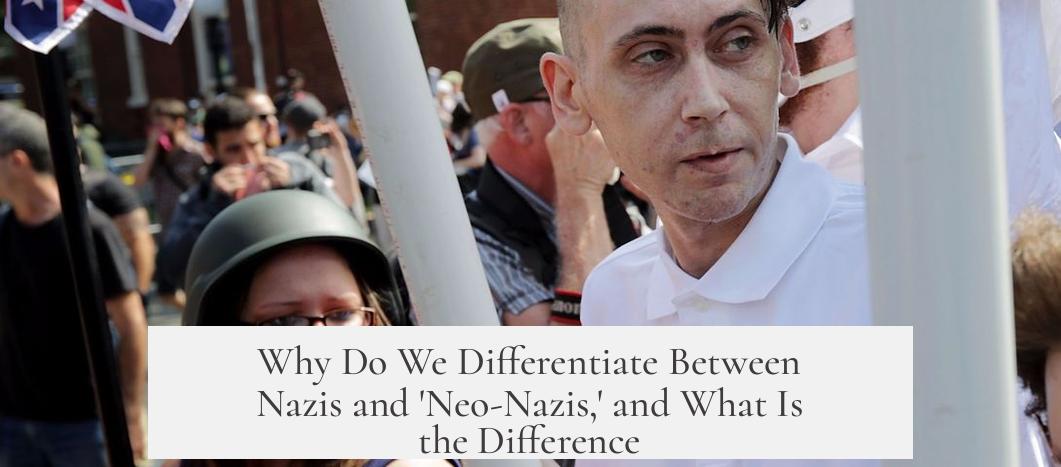
Simply put, Nazis were the original members of the NSDAP—the Nazi Party active mainly before and during World War II—while neo-Nazis are those who embrace Nazi ideology or symbols after the Nazi Party fell, trying to revive or imitate that dark history. But that’s just the starting point. Understanding why we keep these terms separate helps us grasp history, ideology, and political movements more clearly today.
So, what sets these two apart beyond the timelines? Let’s unpack the story.
What Exactly Is a Nazi?
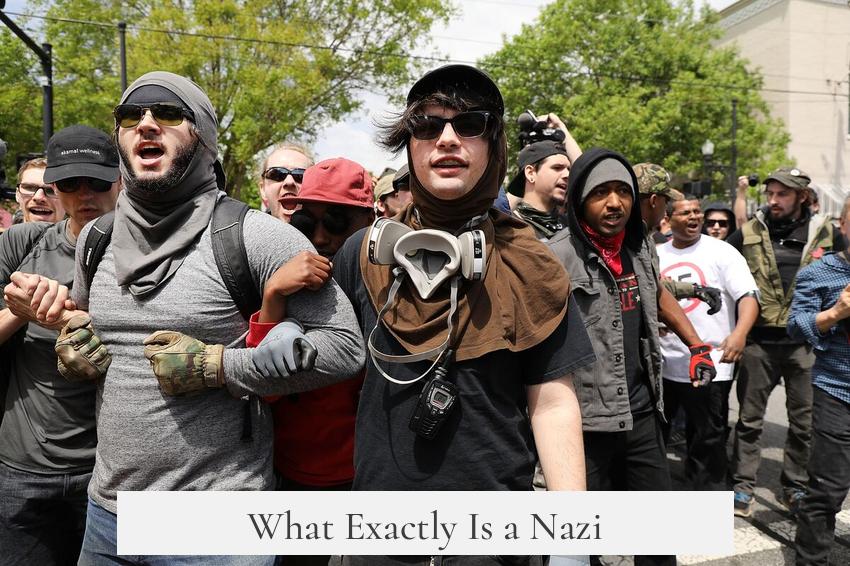
First, meet the original Nazis. The term “Nazi” was short for National Socialist German Workers’ Party (NSDAP). This was the political party that, under Adolf Hitler’s leadership, ruled Germany from roughly 1933 to 1945. However, the roots go back to about 1918, post-World War I Germany, when the party first popped up in the turbulent political soil of the Weimar Republic.
Being a Nazi meant two things: either a person was a party member, or they subscribed to the Nazi ideology. And that ideology? Well, it includes extreme nationalism, racial superiority myths, anti-Semitism, and often militaristic expansionism. In multiple global history classes, Nazis earned their grim reputation as the architects of World War II and the tragic Holocaust.
In other words, Nazis are fixed in a very specific historical context, bonded by time, party membership, and ideology tied to a particular government and era.
Enter the Neo-Nazis: What’s Their Deal?
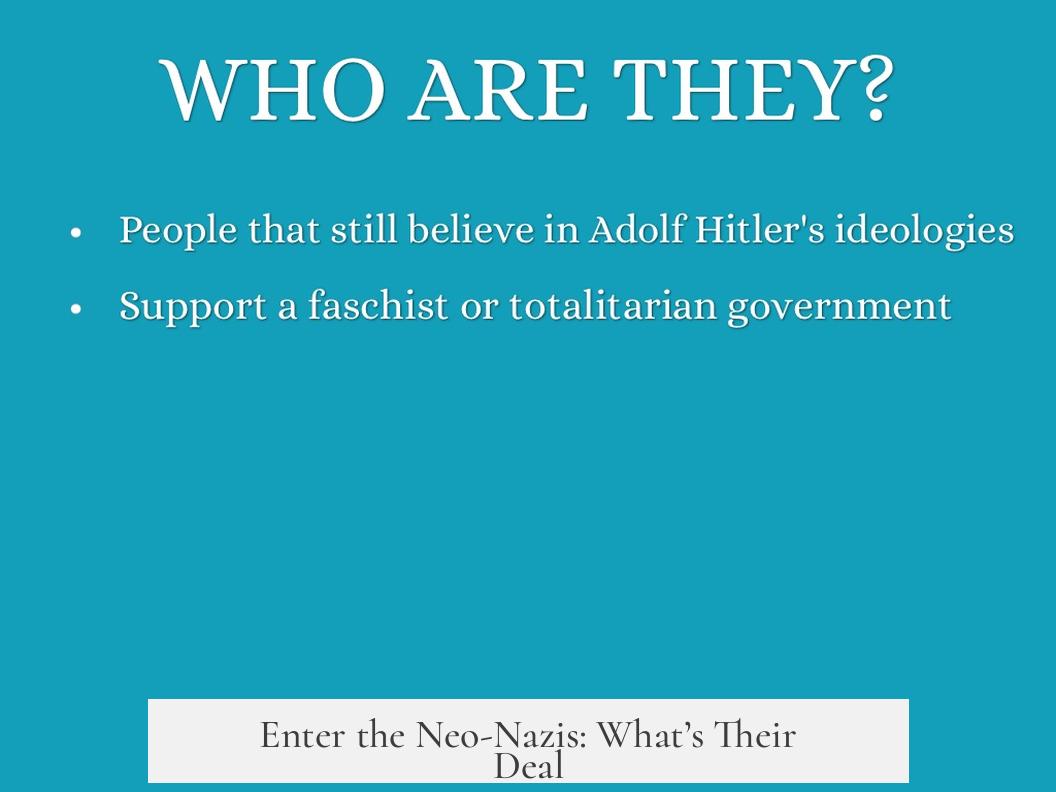
Now fast forward to after 1945—Germany’s Nazi Party is no more. But as the saying goes, “old ideas never truly die.” Neo-Nazis are those who, well, pick up the dusty Nazi handbook and start reading again. They don’t operate under the original Nazi Party—that’s history and law in most places prohibits Nazi organizations—but they embrace similar (or same) racist, nationalist, and authoritarian beliefs.
Neo-Nazis don’t belong to the NSDAP; the party doesn’t exist anymore. Instead, they often attach their hateful ideology to new groups or movements. Think of neo-Nazism as a spiritual sequel with a much smaller cast but dangerously similar script.
Unlike Nazis tied to a particular era and government, neo-Nazis might exist anywhere worldwide today, anywhere from isolated extremist cells to skinhead gangs. They often adopt Nazi symbols, slogans, and mythology—but usually with local flavors. Some focus on white supremacy in the U.S., others on anti-immigrant agitation in Europe. Their goal? To keep the original Nazi themes alive.
Why Does It Matter That We Differentiate?
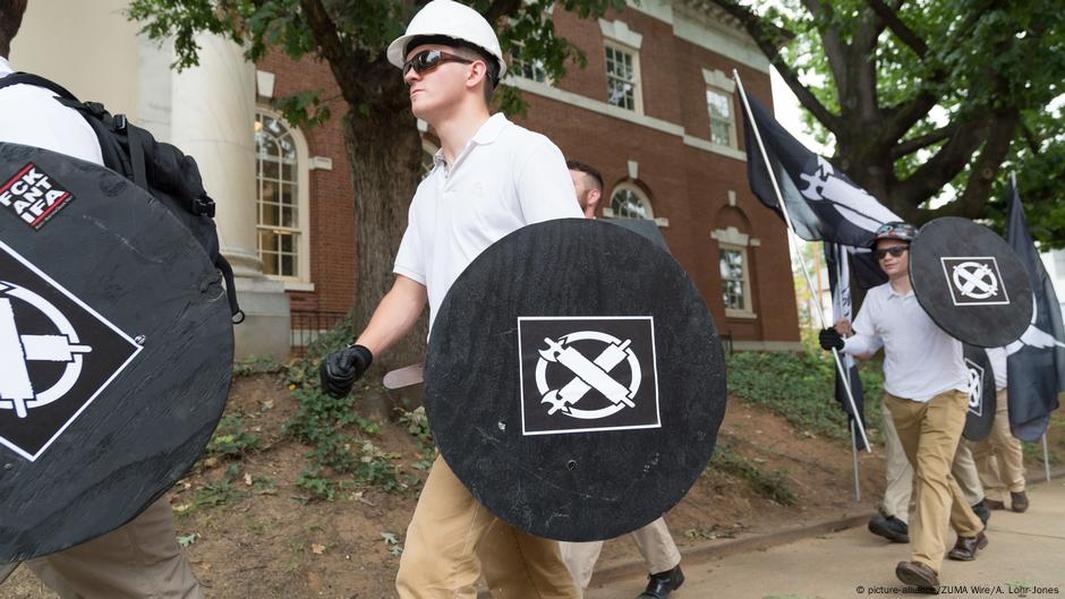
One might ask, “If neo-Nazis simply echo Nazi beliefs, why all the fuss about labels?” This is more than semantics; it’s about accuracy and historical clarity.
First, Nazis are historical actors bound by time. They committed massive atrocities and shaped WWII. When we say “Nazi,” we specifically mean those linked directly to that regime. Saying “neo-Nazi” helps signal that while the ideology persists, those followers are not the same people historically responsible.
Second, the distinction aids law, education, and social understanding. Most countries ban Nazi symbols and parties from returning. The word “neo-Nazi” helps governments monitor extremist groups that try to sneak in behind the original party’s fall.
Third, differentiating the two helps us read the political and social dynamics better. For instance, if a person in the 21st century claims they are a “Nazi,” they’re not part of that original group—which is extinct—but are a “neo-Nazi” trying to revive hateful ideas. Understanding this distinction is key to crafting responses and strategies against hate groups today.
How Do Neo-Nazis Imitate the Nazis?

Neo-Nazis often imitate Nazis by adopting many of their symbols and rhetoric. You might spot swastikas, goose-stepping marches, or hateful chants. But unlike the original Nazis who wielded state power, neo-Nazis are generally fringe extremists or underground movements.
Yet, the dangerous appeal remains. They aim to recreate the “purity” and nationalist pride preached 80 years ago. It’s a combination of nostalgia for a violent past and a twisted belief that those times can return.
This imitation extends to propaganda style too. Both Nazis and neo-Nazis use scapegoating, blaming minorities for societal problems. However, neo-Nazis operate in a world that already remembers the original atrocities. Their impact, though smaller scale, is a threat to social harmony.
Practical Tips: Dealing with Neo-Nazi Ideology
- Education is key. Teaching history with facts about Nazism’s horrors helps immunize future generations against neo-Nazi recruitment.
- Recognize the signs. Know the difference so you can help spot emerging extremist groups in your community.
- Report hate activity. Many countries have hotlines or tools to report hate crime or extremist behavior online and offline.
- Promote dialogue. Engaging in conversations about why these ideologies persist today helps build resilience in society.
Wrapping Up: Why the Distinction Sticks
In the end, Nazis and neo-Nazis share hateful beliefs, but they live in *very* different contexts. Nazis refer to the members of a specific party, active mainly before and during World War II, responsible for choices leading to unspeakable atrocities. Neo-Nazis are later groups trying to revive that ideology after the Nazi Party’s downfall.
This distinction is not just academic. It helps historians, governments, educators, and citizens address hate in its old and new forms. So next time you hear these terms, remember: calling someone a Nazi connects them directly to history. Calling them a neo-Nazi means they’re trying to drag that past into the present. And that is a very different thing—one the world needs to keep watchful eyes on.
What defines a Nazi compared to a Neo-Nazi?
Nazis were original members of the NSDAP or people who supported Nazism before and during WWII. Neo-Nazis embrace similar beliefs but exist after the original Nazi party ended in 1945.
Why do we separate Nazis from Neo-Nazis?
The term Nazi refers specifically to the historic party and its followers during its active years. Neo-Nazis are modern groups that try to revive or copy Nazi ideology today.
Do Neo-Nazis have direct ties to the original Nazi Party?
No, Neo-Nazis do not have direct connections to the original Nazi Party. They adopt Nazi ideas but are separate from the historical party itself.
Is the ideology of Neo-Nazis exactly the same as historic Nazis?
Neo-Nazis mainly try to imitate Nazi ideas. While the core beliefs are similar, their context and methods can differ from those of WWII Nazis.
Can anyone still be called a Nazi today?
The term Nazi usually refers to members of the Nazi Party before 1945. Today, people with similar beliefs are more accurately called Neo-Nazis.
